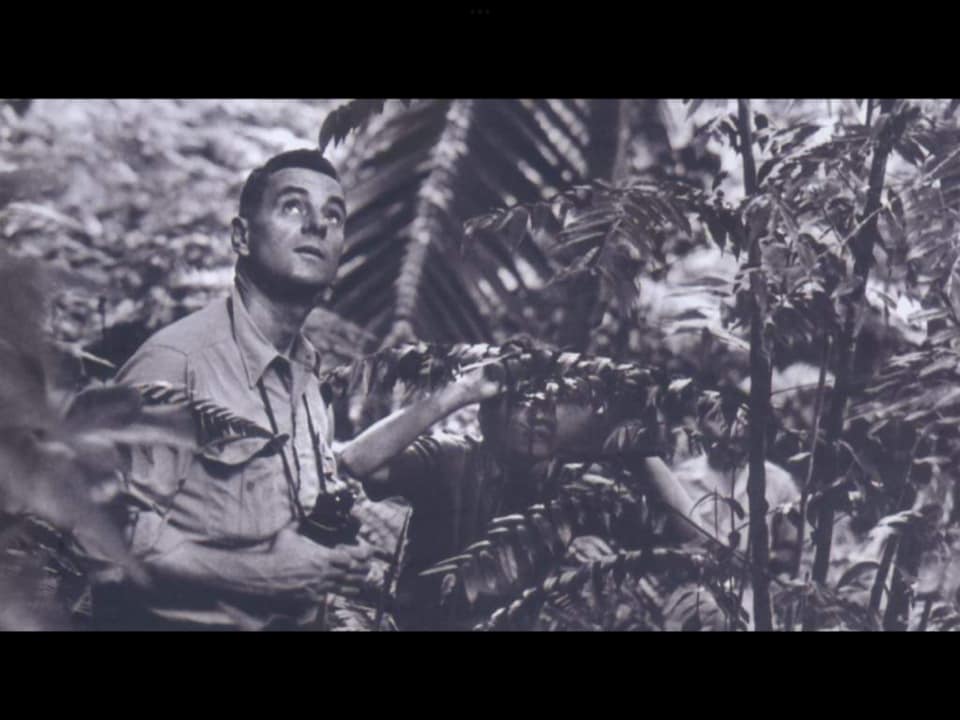Remembering Dr. Frank H Wadsworth

Dr. Wadsworth arrived in Puerto Rico by boat without knowing anything about the island, he simply knew that it was one of two options that the agency offered him when he married his supervisor's daughter. He was already familiar with his other option in Alaska and decided on the adventure of the tropics.
Puerto Rico was the winner because for the next 80 years Dr. Wadsworth focused his enormous energy, talent and discipline on the development of tropical forestry, which did not exist at that time.
Thanks to Dr. Wadsworth and his collaboration with the government of Puerto Rico, a conservation movement began, with a focus on the wise use of the Island’s natural resources, particularly its land and forests.
Dr. Wadsworth was instrumental in developing public policy that gave way to the Environmental Quality Board, the Department of Natural Resources, and the Forest Act.
Dr. Wadsworth supports environmental education through his efforts with the Natural History Society of Puerto Rico, Boy Scouts of America, Puerto Rico Council, and Julio Enrique Monagas National Park in Bayamón.
During his tenure as an employee of the United States Forest Service, Dr. Wadsworth was a forester, Director of the Institute of Tropical Forestry (now the International Institute of Tropical Forestry), Supervisor of the Caribbean National Forest (now El Yunque National Forest), and after his retirement from the Forest Service, he continued his research as a volunteer at the Institute, always dedicated to conservation and tropical forestry. He traveled the world, but in Latin America they remember him because he established the practice of tropical forestry and was responsible for the development of foresters that he trained in Puerto Rico and of tropical forestry schools in several countries including Venezuela. He wrote books on the trees of Puerto Rico, Mona Island, and the forest production of tropical America. He was protector of El Yunque ensuring that its lands were administratively designated as a place for research, water and wildlife conservation and the perennial protection of its historic forests. He initiated research on the Puerto Rican parrot that led to the conservation efforts which prevented its extinction.
Over the years Dr. Wadsworth became a Puerto Rican and at the time of his retirement he remembered the beauties of Puerto Rico that he had the opportunity to know, appreciate and preserve. Thanks to his work today, all Puerto Ricans understand the importance of trees and their benefits, and advocate for the greening of the Island. The seeds that Dr. Wadsworth sowed during his long and productive career, have germinated in all of us.
Puerto Rico y el Servicio Forestal de los Estados Unidos de América perdieron a un gigante de la conservación con el fallecimiento de Frank H. Wadsworth.
El Dr. Wadsworth llegó en 1942 a Puerto Rico en barco sin conocer nada de la isla, simplemente sabía que era una de dos opciones que la agencia le ofreció cuando contrajo matrimonio con la hija de su supervisor. Ya estaba familiarizado con su otra opción en Alaska y decidió por la aventura del trópico.
Puerto Rico fue el ganador ya que por los próximos 80 años el Dr. Wadsworth enfocó su enorme energía, talento y disciplina en el desarrollo de la dasonomía tropical, la cual no existía en ese momento.
Gracias al Dr. Wadsworth y su colaboración con el gobierno de Puerto Rico, se desarrolló en Puerto Rico un movimiento de conservación enfocado en el uso sabio de sus recursos naturales, particularmente la tierra y sus bosques.
El Dr. Wadsworth fue instrumental en el desarrollo de la política pública que dio paso a la Junta de Calidad Ambiental, el Departamento de Recursos Naturales y la ley de bosques.
El Dr. Wadsworth apoyó la educación ambiental a través de sus esfuerzos con la Sociedad de Historia Natural de Puerto Rico, los Niños Escuchas de América, Concilio de Puerto Rico, y el Parque Nacional Julio Enrique Mónagas en Bayamón.
Durante su incumbencia como empleado del Servicio Forestal de los Estados Unidos de América, el Dr. Wadsworth fue silvicultor, Director del Instituto de Dasonomía Tropical (ahora Instituto Internacional de Dasonomía Tropical), Supervisor del Bosque Nacional del Caribe (ahora Bosque Nacional El Yunque) y, luego de su retiro del Servicio Forestal, continuó sus investigaciones como voluntario en el Instituto. Siempre dedicado a la conservación y la dasonomía tropical. Viajó el mundo, pero en Latinoamérica lo recuerdan porque estableció la práctica de la dasonomía tropical y fue responsable por el desarrollo de dasónomos que entrenaba en Puerto Rico y de escuelas de dasonomía tropical en varios países incluyendo a Venezuela. Escribió libros sobre los árboles de Puerto Rico, la Isla de Mona, y la producción forestal de América tropical. Fue protector de El Yunque asegurando que sus terrenos fuesen designados administrativamente como lugar para la investigación, la conservación del agua y la vida silvestre y la protección perenne de sus bosques históricos. Comenzó el esfuerzo de investigación sobre la Cotorra de Puerto Rico lo cual evitó su extinción.
A través de los años el Dr. Wadsworth se convirtió en un puertorriqueño y en el momento de su retiro recordó las bellezas de Puerto Rico que él tuvo la oportunidad de conocer, apreciar y conservar. Gracias a su labor, hoy todos los puertorriqueños entendemos la importancia de los árboles y sus beneficios, y abogamos por el verdor de Puerto Rico. Las semillas que el Dr. Wadsworth sembró durante su carrera hoy han germinado en todos nosotros.
USDA is an equal opportunity provider and employer. To file a complaint of discrimination, write to USDA, Assistant Secretary for Civil Rights, Office of the Assistant Secretary for Civil Rights, 1400 Independence Avenue, S.W., Stop 9410, Washington, DC 20250-9410, or call toll-free at (866) 632-9992 (English) or (800) 877-8339 (TDD) or (866) 377-8642 (English Federal-relay) or (800) 845-6136 (Spanish Federal-relay).
Page last modified: 01/08/2022






